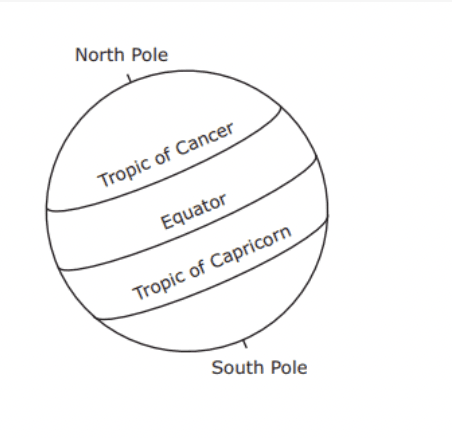
TEKS Grade 8 Science - 8.7 Diagnostic - Earth, Sun and Moon
Quiz by Grade 8 Science - Texas Education Agency
Grade 8
Science (2017)
Texas Essential Knowledge and Skills (TEKS)
Feel free to use or edit a copy
includes Teacher and Student dashboards
Measures 3 skills from
Measures 3 skills from
With a free account, teachers can
- edit the questions
- save a copy for later
- start a class game
- automatically assign follow-up activities based on students’ scores
- assign as homework
- share a link with colleagues
- print as a bubble sheet
10 questions
Show answers
- Q1Which of these locations on Earth experiences the least change in the number of daylight hours throughout the year?Tropic of CancerTropic of CapricornEquatorNorth Pole30s8.7a
- Q2Earth would not have seasons if it —took an additional month to orbit the sunrevolved around the sun in the opposite directionstopped rotating on its axisno longer tilted on its axis30s8.7a
- Q3Which of these changes would likely occur if the rate of Earth’s rotation on its axis increased?The length of a day would be shorter.The length of a day would be longer.The length of the seasons would be shorter.The length of the seasons would be longer.30s8.7a
- Q4A student keeps a record of the phases of the moon for one month. On the first night of the student’s observations, the full moon is visible in the sky. After the full moon, which of these phases will the student observe next?Waxing crescent moonWaxing gibbous moonWaning crescent moonWaning gibbous moon30s8.7b
- Q5The diagram shows four phases of the moon as it revolves around Earth. A student builds a model based on this diagram. The student uses foam balls to represent the moon and Earth and a flashlight to represent the sun. The student should shine the flashlight on the model of Earth from Position —213430s8.7b
- Q6Two friends want to go for a night hike when there is a full moon in July. If there is a third-quarter moon on July 2, what is the approximate date of the next full moon?July 16July 23July 9July 3030s8.7b
- Q7A student must complete the column of the table that lists the dates of the full moons. What are the most likely dates of the full moons?February 15, March 17, April 15, May 14February 29, March 31, April 29, May 28February 25, March 27, April 25, May 24February 5, March 7, April 5, May 430s8.7b
- Q8What are tides?The rise and fall of ocean water levels.The location where water and sand meet.The water on the moon that pulls the water on earth.Bulges of water caused by the Sun's gravity.30s8.7c
- Q9Which tide has the least extreme tidal changes?Spring TideNeap Tide30s8.7c
- Q10Which of these moon phases does not occur during a Spring Tide?Waxing CrescentNew MoonWaning Gibbous1st Quarter30s8.7c
